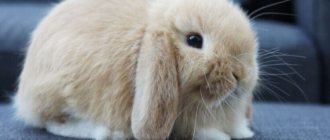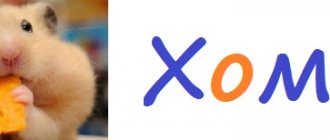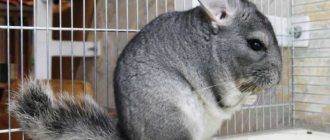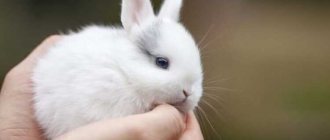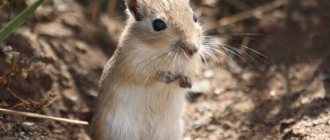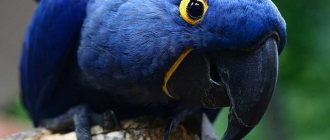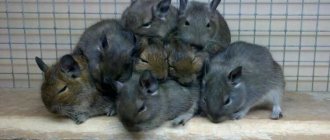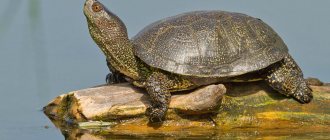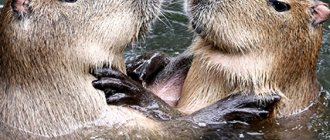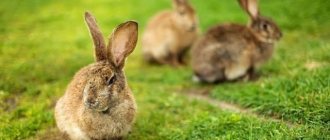- home
- Chinchilla
- Character and features
07/26/2019 Chinchillas are cute creatures, the size of which does not exceed 25–35 cm. Animals that love to be taken care of and do it very carefully. In return, the animals give tenderness and affection to the owner.
In this article, breeders, as well as lovers of these animals, will learn facts about chinchillas and get to know the animal better.
№2
Their bodies are covered with unique fur. It is 30 times softer than human hair. Moreover, from one follicle (hair follicle), up to 50-80 strands can grow. Thanks to this, their fur is so dense that fleas or other parasites simply cannot settle in it. Naturally, such density also has its drawbacks. In order to cleanse its fur of the oil secreted by the body, the animal needs to regularly take dust baths.
Animal skeleton
The body structure of chinchillas provides them with reliable shelter and makes it possible to survive in rocky mountain conditions. The chinchilla's skeleton tapers when necessary. The need may arise when an animal hides in narrow crevices from predators and bad weather. There are 5 toes on the front legs of rodents, and 4 on the hind legs. The hind legs are longer and stronger than the front ones, which allows the animals to jump high.
Rodents have a set of 20 strong teeth that grow throughout their lives. Newborn babies have developed dental systems: there are 12 teeth at once.
How to determine the age of a chinchilla?
By external signs it is easy to determine the age of the animal. Determination is possible in several ways:
- By weight: at two months of age - up to 300 grams, at six months - up to 500 grams, per year - up to 800 grams.
- On the heels: young individuals have delicate skin on the heels. To determine age more accurately, the paws of an individual whose age is unknown can be compared with those for whom this indicator is known.
- According to the muzzle: with age, the muzzle becomes longer.
- In size: at 3-4 months a chinchilla is close to the size of a guinea pig, at 6 months and after the animal can be compared to a rabbit.
- By the color of the teeth: up to 2 months, the teeth are white, and when chinchillas grow up, the color of their teeth becomes orange.
- By sexual characteristics: in males, testicles appear by the fifth month of life; by the age of seven months, the genital organs are already easy to distinguish from female ones.
- According to the ear flaps: chinchillas with the beige gene begin to have flaps on their ears by the age of 5 months. There should be more than 2 of them per year, and in an adult at the age of 3-4 years, all the ears are covered with spots.
№3
In addition to its decorative function, their fur has a protective function. First of all, it protects the animal from the low temperatures characteristic of the mountainous regions where they live in the wild.
Also, their fur comes off very easily from the body. This helps the animal “jump out” from the mouth of a predator if it grabs it, simply by shedding a tuft of fur.
Finding a rodent in the house
Based on the list of advantages, bringing such an animal into your apartment is incredibly profitable and economical. You don’t have to let him out of the cage for a walk, for example, the cat in the house is not friendly towards the animal. According to Feng Shui, a mouse in the apartment at the same time will not get along.
It is enough to have a large, roomy cage; the pet will jump in it. The main rule is to treat the animal well. There is a sign: “Only reverent and affectionate treatment of a chinchilla will bring peace and tranquility to the house.”
Reasons against:
- Chinchillas take a long time to get used to people; to gain trust in the animal, it will take time, perseverance, and strength.
- This type of rodent loves silence and is very timid. One sudden movement or loud sound can cause the animal to go bald. Therefore, if the apartment is constantly noisy, it is better not to get an animal, so as not to create stress for it. This also applies to homes where small children live.
- Chinchillas cannot tolerate overheating, for this reason they cannot be held in your arms for a long time, so this animal is not suitable for those who like too much tenderness;
- It is not advisable to place a cage with an animal in the bedroom; at night, chinchillas are very noisy, they need to eat, jump, fuss for a long time, all the work needs to be done before dawn, so they are in a hurry.
- There will be no cleanliness near the cage, so the pet is not suitable for those who like order.
№6
One of the main evolutionary features of the chinchilla is its thick blood. It is thicker than that of humans and most other animals. This is due to the fact that there are more red blood cells in their blood. The more red blood cells there are, the more oxygen they can transport, which allows chinchillas to survive at high altitudes.
History of domestication
An interesting fact about chinchillas is that these animals got their name from Chincha, the name of a Peruvian tribe. They lived for the first time as pets at home with Indians who lived in the chinchilla habitat.
The beginning of the period of distribution of rodents is considered to be 1919, when Matthias F. Chapman bought one animal from a local resident and assembled an expedition to get a few more individuals he liked.
During the three-year expedition, they managed to catch 12 chinchillas, one of which, unfortunately, died during transportation, and another one increased the number of animals on the ship, giving birth to offspring.
To make the animals feel comfortable on the way, people used a wet cloth and ice for the cage with the animals.
№7
Currently, there are only two types of them. These species include: Chinchilla lanigera and short-tailed chinchilla (Chinchilla brevicaudata). The first species, although rare, is found in the wild in the highlands of the Andes in Chile. The second species is currently considered almost extinct.
Laniger's chinchilla is the most common pet, while the short-tailed chinchilla is very rare. The Shorttail is distinguished from the Laniger by its shorter tail, smaller ears, wider shoulders and thicker neck.
Visual signs of maturation
Unfortunately, knowledge of weight often does not help owners determine the exact age of the pet, since many purchase adult rodents that have lived for more than a year. How, then, can you determine the age of a chinchilla if it was bought as an adult? The answer is simple: take a closer look at the external signs.
Young rodents are more mobile and active compared to older individuals. They are inquisitive and show interest in everything around them. As the animal grows up, it becomes more sedate, plays less and moves more sedately. To fully analyze and determine the age of an animal by its appearance, you should evaluate:
- body features of the individual;
- structure of the muzzle;
- foot characteristics;
- teeth: their color and condition.
Young rodents from birth until 6 months of development have a muzzle, neck and ears that are shorter and more rounded than those of adults. The main stages of maturation are accompanied by elongation and growth of the parietal region of the head, which leads to lengthening of the muzzle. At the same time, the initial distance between the eyes of chinchillas does not change over time.
The teeth of the cub, which feeds mainly on mother's milk, are white. As soon as an individual begins to eat plant foods, its teeth become yellow or orange. In other words, the darker the teeth, the older your chinchilla.
Young rodents also have smooth feet, without calluses or abrasions. If the skin on the paws is roughened, it means that it is already quite mature, which also indicates the age of the animal.
The life path of a chinchilla is unlikely to be correctly divided into time periods. It is also a mistaken belief that chinchillas grow up to a certain age. The most universal parallels can be drawn if we compare the stages of growing up of a rodent with similar human parameters.
The monthly stage of animal development corresponds to 6 months of child development. By this age, the animal begins to erupt its first teeth. Both males and females reach sexual maturity at 6–7 months, which corresponds to 16 years of human life. The female reproductive system remains functional until 12–15 years of age, which coincides with the period of 40–50 years in women.
The maximum life expectancy of chinchillas does not exceed 25 years, which can be compared with 75 years of human life.
№12
As we noted earlier, these are mountain rodents. In the mountains, sleeping conditions are not always the most comfortable. Therefore, chinchillas can be found sleeping in amazing positions. They may fall asleep lying upside down in a crevice, lying on their back, or literally standing on their head. The same can be observed in a cell. The animal retains its instinct, which is why it can sleep in amazing positions even in a comfortable corner in its cage.
Interesting Facts
Until recently, nothing was known about chinchillas. Because finding them in nature is very rare. And this is the first fact. At the beginning of the 20th century, furry cats were on the verge of extinction because of their beautiful fur. And only in 1919 the first chinchilla farm appeared. It was captive breeding that saved the animals from extinction. Now the chinchilla is listed in the International Red Book. Here are some more interesting facts about furries:
- Despite their large eyes, chinchillas have fairly poor eyesight. They primarily navigate in space using hearing and whiskers.
- Chinchillas are very nimble and agile. Given enough space, they can jump up to 2 meters in height and reach speeds of up to 25 km/h.
- If a predator grabs a chinchilla's fur coat with its teeth, it may shed its fur to escape. This is similar to how a lizard throws its tail.
- Chinchilla fur is unique. It is very soft and dense. From one bulb 60-80 hairs grow at once. This is necessary so that the fluffies do not freeze in the harsh conditions of the Andes. And because of such density, fleas never appear in the fur coat of animals - parasites simply cannot move in it.
- Getting their fur coat wet can be deadly for chinchillas. The fact is that their dense fur dries very slowly. Therefore, the animal inevitably freezes and gets sick. That is why fluffies use only sand or volcanic ash for bathing.
- When in danger, chinchillas use various mechanisms - they run away, try to scare away the enemy with a battle cry, or hide. But the most interesting method of defense is a powerful stream of urine, which the chinchilla mercilessly directs at the approaching enemy. Therefore, it is better not to anger your pet.
- Chinchillas live in groups. The size of a colony can range from 10 to 100 animals. Moreover, the dominant individual is the female. Complete matriarchy reigns in the colonies. Female chinchillas even outweigh males.
- Chinchilla blood is highly viscous. This is explained by the high percentage of erythrocytes in the plasma - red blood cells, which are responsible for delivering oxygen to the rest of the cells of the body. A similar mechanism has been developed over thousands of years and is aimed at survival in high mountain areas.
Another interesting fact is that the history of chinchillas is inextricably linked with humans. Thus, American archaeologists discovered rocks in Chile with images of animals very similar to chinchillas. And if these are not the fluffies themselves, then they are definitely their ancient ancestors. Scientists believe that before the European invasion of South America, chinchillas coexisted quite peacefully with the Indians. And some tribes even managed to tame furry animals.
Surely, chinchillas have many more features and interesting facts that we are not even aware of. But chinchilla owners already have enough knowledge to understand that fluffies can become real family members. And that with the right approach, you can build strong, trusting relationships with them.
№13
Most rodents, such as mice, hamsters, etc., live no more than a few years. Even if you compare chinchillas with other mammals such as rabbits, they live much longer.
While the average lifespan of rabbits ranges from 9 to 10 years, chinchillas can live up to 20 years. Naturally, at home. In the wild, due to the presence of various factors (predators, climatic conditions, etc.), their life expectancy is significantly reduced.
We also recommend reading: Interesting facts about parrots
Features of chinchillas
Despite the fact that chinchillas belong to the order of rodents, they are very different from the decorative rats and hamsters that have become our family. And here are some interesting features of furry animals:
- Chinchillas give birth to puppies that are fully adapted to life - with open eyes and covered with thick fur. In addition, cubs can move independently from the first days of life.
- Sometimes fluffies sleep upside down. They inherited this habit from their wild relatives, who were accustomed to hiding in gorges in the most unusual positions. Chinchilla sleep has several more interesting features. The most important thing is that they sleep during the day and are awake at night. They can also doze with their eyes open. It looks a little creepy, but it's within normal limits.
- The chinchilla skeleton easily compresses in the horizontal plane. This is another type of adaptation to life in the mountains. This way chinchillas can easily squeeze into the narrowest crevices. That is why to keep a chinchilla you need to buy a cage with small distances between the rods (1.2-1.5 cm).
- Chinchillas are real long-livers. They can easily live up to 20-25 years. But only under good conditions. Interestingly, in the wild, animals live much shorter - 10-12 years. This is due to the presence of numerous natural enemies - mountain foxes, birds of prey and snakes.
- Fluffies have wide pads on their paws, which are needed for shock absorption and better traction on vertical surfaces. By the way, the age of the animal can be determined by the calluses on the pads. The more there are, the older the animal.
- Chinchillas have very sensitive hearing. This is due to the need to navigate well in the dark. Fluffies hear 2 times better than humans. This is why chinchillas are so shy.
- Fluffies do not shed at all. Therefore, chinchillas are ideal pets for allergy sufferers whose skin itches and eyes water at the slightest contact with fur.
- In their natural habitat, chinchillas do not drink at all. They receive moisture from the plants they eat, mainly from morning grass covered with dew. But this does not mean that if you keep a chinchilla at home, you don’t have to give it water. There should always be a drinking bowl with clean water in the cage.
- Unlike most other rodents, chinchillas are monogamous. If a couple matches each other, the partners live amicably until old age. At the same time, females do not have a very developed maternal instinct. There are cases when young mothers simply run away from their hungry offspring to enjoy peace and tranquility.
- Chinchillas use a lot of sounds to communicate with each other and with humans. This may include barking, chirping, snorting, and clicking teeth. Interestingly, during the mating season, the male makes gentle sounds similar to a cat’s purring.
- The branches of some fruit trees are real poison for chinchillas. To prevent your pet from being poisoned, under no circumstances should you offer him twigs of cherry, plum, apricot, cherry plum, or maple.
- Chinchillas do not emit an unpleasant odor like rats, guinea pigs and hamsters. This is due to the fact that furry animals are absolutely devoid of sweat glands. If you clean the cage at least once every 2-3 days, there will be no smell.
- Chinchillas are very smart. Not only do they quickly remember their owner and respond to their name, but they are also quite trainable. After 1-2 months of constant training, the pet can learn commands such as “give paw”, “home”, “walk”, “kiss” and many others.
Another interesting feature that every furry owner should know about is that most pet chinchillas die due to improper feeding. In nature, fluffies feed mainly on dry grasses. Therefore, you cannot feed them succulent food at home, much less human food.
Origin of the species and description
Photo: Chinchilla
It is still unknown who the ancestor of the chinchilla is. Carrying out archaeological excavations in the Cordillera, scientists extracted from the bowels of the earth prehistoric fossils, which in their structure are very similar to chinchillas, only much larger in size. This animal, according to experts, lived forty thousand years ago, so the chinchilla genus is quite ancient. The Incas, many centuries ago, depicted chinchillas on rocks; this painting has survived to this day.
The Incas made various items of clothing from the soft skins of chinchillas, but among the Indians they were far from the first who were so attracted to the fur of rodents. The first who began to wear clothes made from chinchilla skins were the Indians from the Chyncha tribe. It is believed that the chinchilla got its name from them, because the word “chinchilla” itself is consonant with the name of an Indian tribe.
Video: Chinchilla
For the Incas, the value of chinchilla fur was very high; they maintained constant control over their production so as not to harm the animal population. But by the end of the 15th century the situation got out of control, because... The Spaniards who arrived on the mainland began a ruthless hunt for helpless rodents, which led to a rapid decrease in their numbers. The authorities of such South American countries as Chile, Bolivia and Argentina have banned the shooting of animals and their export, and introduced severe punishment for illegal hunting.
The chinchilla is a rodent from the chinchilla family of the same name.
These animals have two varieties:
- short-tailed chinchillas (coastal);
- Chinchillas are large, long-tailed (mountain).
Mountain chinchillas live at high altitudes (more than 2 km), their fur is thicker. This species is distinguished by a hump nose, which is designed for inhaling chilly mountain air. The coastal type of chinchillas is much smaller, but the tail and ears are much longer than those of mountain chinchillas. Officially, the short-tailed chinchilla species is believed to have disappeared completely, although local residents say they have been seen in remote mountainous areas of Argentina and Chile.
It is interesting that the first chinchilla farm was organized by the American Mathias Chapman, who brought the animals to the USA. He began to successfully breed chinchillas in order to sell their valuable fur; many then followed in his footsteps, organizing their own farms.
Diet
Chinchillas are quite delicate animals, and their diet at home must be selected very carefully. What do chinchillas eat? The main food for them is dry hay (it must be properly dried, with a pleasant herbal smell).
In addition to hay, the chinchilla is fed with special food, and the following are suitable complementary foods: cereal flakes, dried leaves, herbs or roots, corn and flax seed, dried pieces of vegetables. These animals happily gnaw on branches of fruit trees and bushes: apple, cherry, raspberry or currant trees. The main thing is that everything is dry and free of moisture.
Chinchillas need to be given water. Make sure the water is always fresh.
